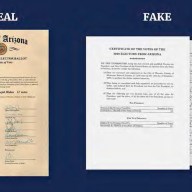A fundraising bake sale at the college where Krystina Castella teaches gave her the incentive to write a book about cakes from around the world.
International students brought Korean, South African, Indian Eastern European and Middle Eastern cakes for the event.
“I discovered that cake is tied to every culture in terms of celebration,” says Castella, 43, a professor at Art Center College of Design in Pasadena, Calif.
“Where other foods are specific to certain countries I discovered in my research there are cakes in every single culture.”
What is enduring about Castella’s “A World of Cake” (Storey Publishing, $29.95, paperback) is that it is not only a cookbook, but also a historical lineage of traditional cakes from region to region.
Readers will find cake history as well as information on sweet delicacies from such far-flung places as Africa, the Indian subcontinent, Latin America, Eastern Europe and Asia.
From the research for her previous baking cookbooks, Castella had many contacts across the world and was able to communicate by e-mail to ask for recipes.
“People ask me if I travelled to all the countries to sample the more than 150 recipes in the book, and all I can say is, ‘I wish.’”
She says she found that cakes are rich with meaning and symbolism, and as a curious cake lover, she has always been interested in the crossover between cultural and culinary history.
Along with stunning photographs, there are recipes for Mexican wedding cakes, English Trifle, Chinese Mooncakes, Spanish Honey Cakes and German Chocolate Cake, to name a few.
Canada is also represented in the book. Among the desserts are Buche de Noel (Yule Cake), Nanaimo Bars and Blueberry Cake.
And what are her favourite cakes?
“I like all the chocolate cakes,” she says.
Here from the book is a recipe for a light and airy sponge cake named after its place of origin, Genoa, Italy. It was adopted by the French in the 15th century and became the basis for much of French patisserie.
The cake is leavened solely by whipped whole eggs. The addition of melted butter makes it more tender than other sponge cakes.
Genoise Sponge Cake
- 325 ml (1 1/3 cups) cake flour
- 250 ml (1 cup) cornstarch
- 12 eggs
- 375 ml (1½ cup) superfine sugar
- 150 ml (2/3 cup) unsalted butter, melted and cooled
- 10 ml (2 tsp) vanilla extract
- Preheat oven to 190 C (375 F). Butter and flour two 20-cm (8-inch) square cake pans.
- In a medium bowl, combine flour and cornstarch; set aside.
- In a double boiler over medium heat, beat eggs and sugar until sugar has dissolved.
- When mixture reaches 44 to 40 C (110 to 120 F) on an instant-read thermometer, remove from heat. Continue to beat with an electric mixer until eggs have tripled in volume and become thick. Gradually fold in butter and vanilla. Fold in the flour mixture.
- Spread batter into prepared pans. Bake for 30 to 40 minutes or until golden brown and cake shrinks from the sides of the pans.
- Let cakes cool in pans for 5 minutes, then remove from pans and set on a rack to finish cooling.
Makes 2 cakes to serve 12.
Correction – Nov. 5, 2010, 12:54 p.m. EST: A previous version of this story mistakenly omitted the instructions on when to add the flour mixture. It has since been added.
















